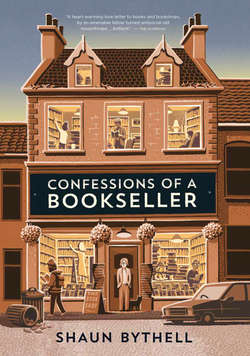Читать книгу Confessions of a Bookseller - Shaun Bythell - Страница 71
На сайте Литреса книга снята с продажи.
Friday, 13 March
ОглавлениеOnline orders: 2
Orders found: 2
Alarmingly, Nicky was in on the dot of 9 a.m. I had to check my watch three times to make sure it hadn’t stopped. Shortly afterwards, Jeff the minister dropped in to trawl through the theology section. He often does this, and inevitably makes disparaging comments about my stock. Nicky’s hackles rise when he comes in, but thankfully Jeff is blissfully oblivious to her particular religious predilections.
One good sale today: £220 for two early beautiful leather-bound editions of Lewis Carroll’s Through the Looking-Glass and What Alice Found There and Alice’s Adventures in Wonderland. They weren’t the more valuable first editions, but they certainly weren’t cold on their heels.
As I was going through some boxes of fresh stock, I discovered another RAF observer’s log-book from the Second World War. I’ll put it on eBay. It won’t sell in the shop. These more unusual things tend to disappear into the shelves when they’re in the shop, but online they seem to stand out and realise decent prices.
I recently had a copy of The Little Grey Men, by BB, published in 1942. On the verso (left-hand page, when you’re looking at an open book) of the half-title is a crest that reads BOOK PRODUCTION WAR ECONOMY STANDARD. I think the first time I saw this was on a first edition of The 39 Steps, published in 1915, although I may be wrong about that. Certainly, the production values of The 39 Steps were not high. The War Economy Standard came into force because of the need to prioritise resources for the war effort, so publishers were forced to cut their paper consumption by 60 per cent, and print size, blank pages, words per page etc. were dictated by the Ministry of Supply. Most books published between 1942 and 1949 will bear the compliance stamp on one of the preliminary pages.
The War Economy Standard is also responsible for a legend in the world of publishing. Pan Books came into existence in part because of the regulations: the rigours and demands of the war meant that cheap paperbacks were more compliant than heavy hardbacks. Pan commissioned Mervyn Peake to design a logo for them, which he duly did—the iconic silhouette of Pan playing the pipes. They offered him two options: a one-off payment of £10 or a percentage of every book sold under the Pan imprint. Graham Greene advised him to take the £10 because he believed that ‘the paperback book was just a temporary solution to the paper shortage.’ He took Greene’s advice, which, it turns out, was a costly mistake.
Denys Watkins-Pitchford wrote and illustrated many natural history books under the pseudonym BB (the size of the shot in a shotgun cartridge used for shooting geese). His books—or, at least, some of them—are highly sought after by collectors, and even for people not interested in the subject matter his writing is engaging and, at times, exquisite. One of my earliest reading memories is of being entranced by a story he wrote for children called The Pool of the Black Witch. I couldn’t put it down, and the picture he painted with words is still clear today, thirty-five years later. The landscape, the tension and excitement were so rich and real that perhaps, more than anything, that book taught me the joy that reading can bring.
Nicky stayed the night.
Till Total £366.50
9 Customers
